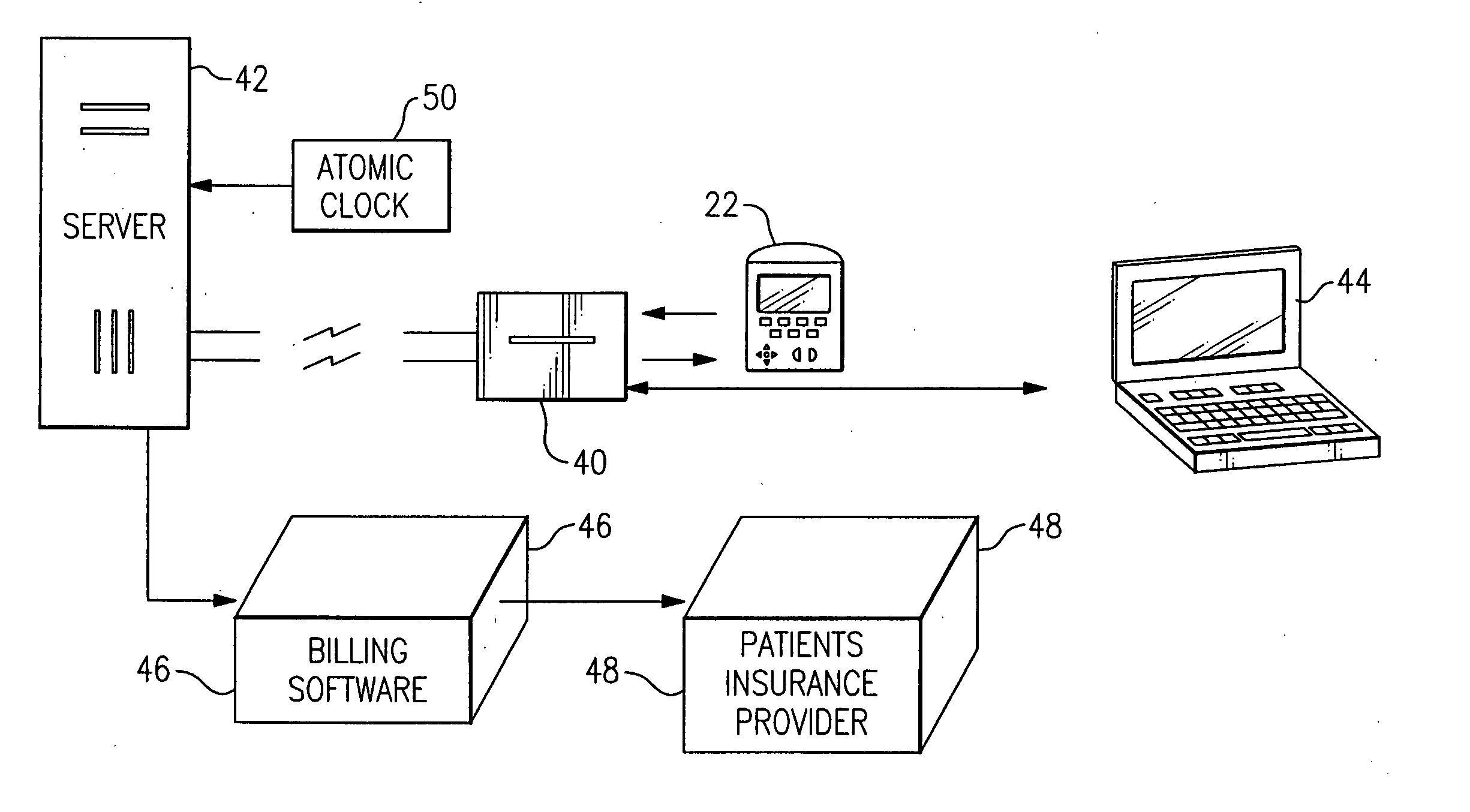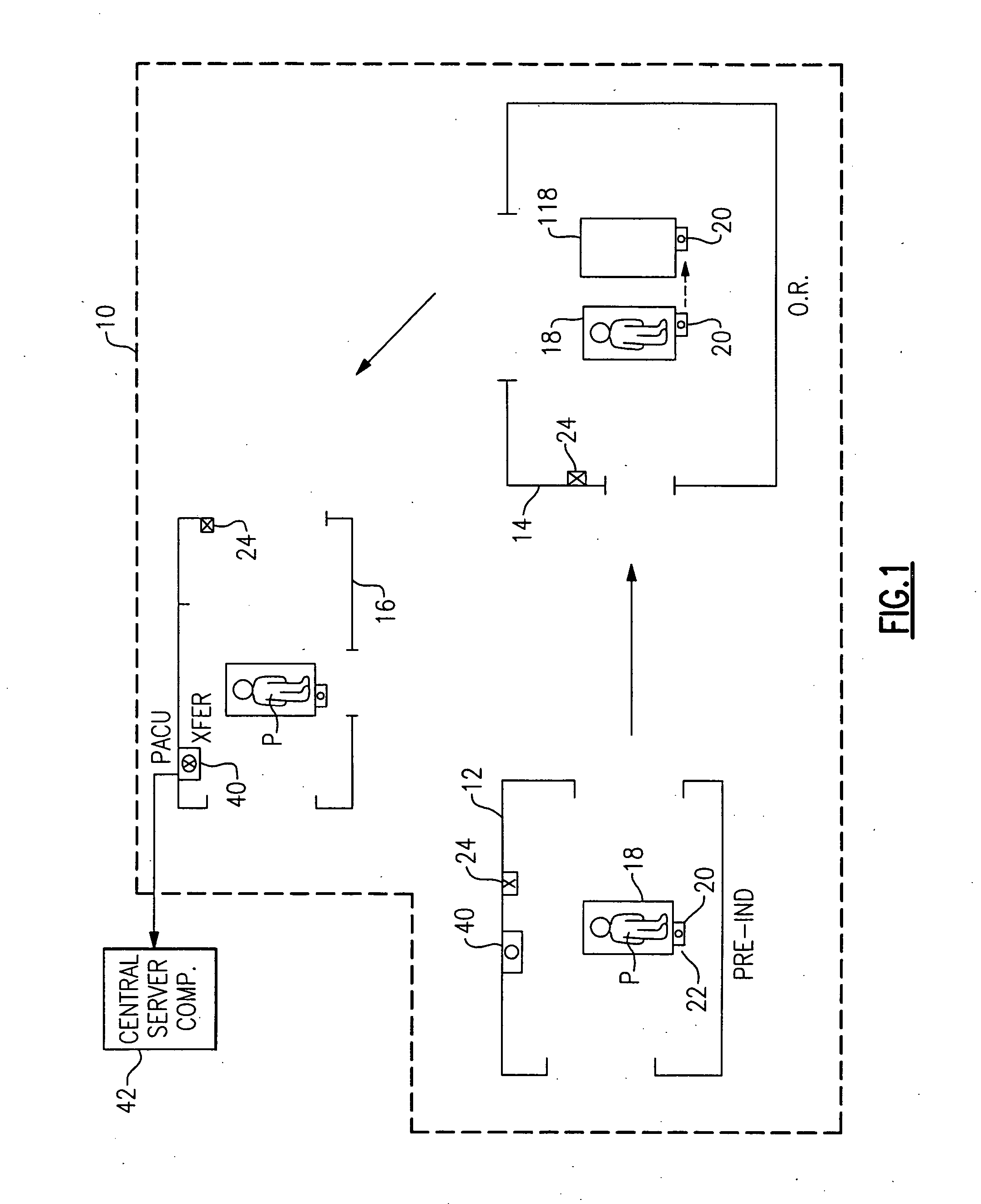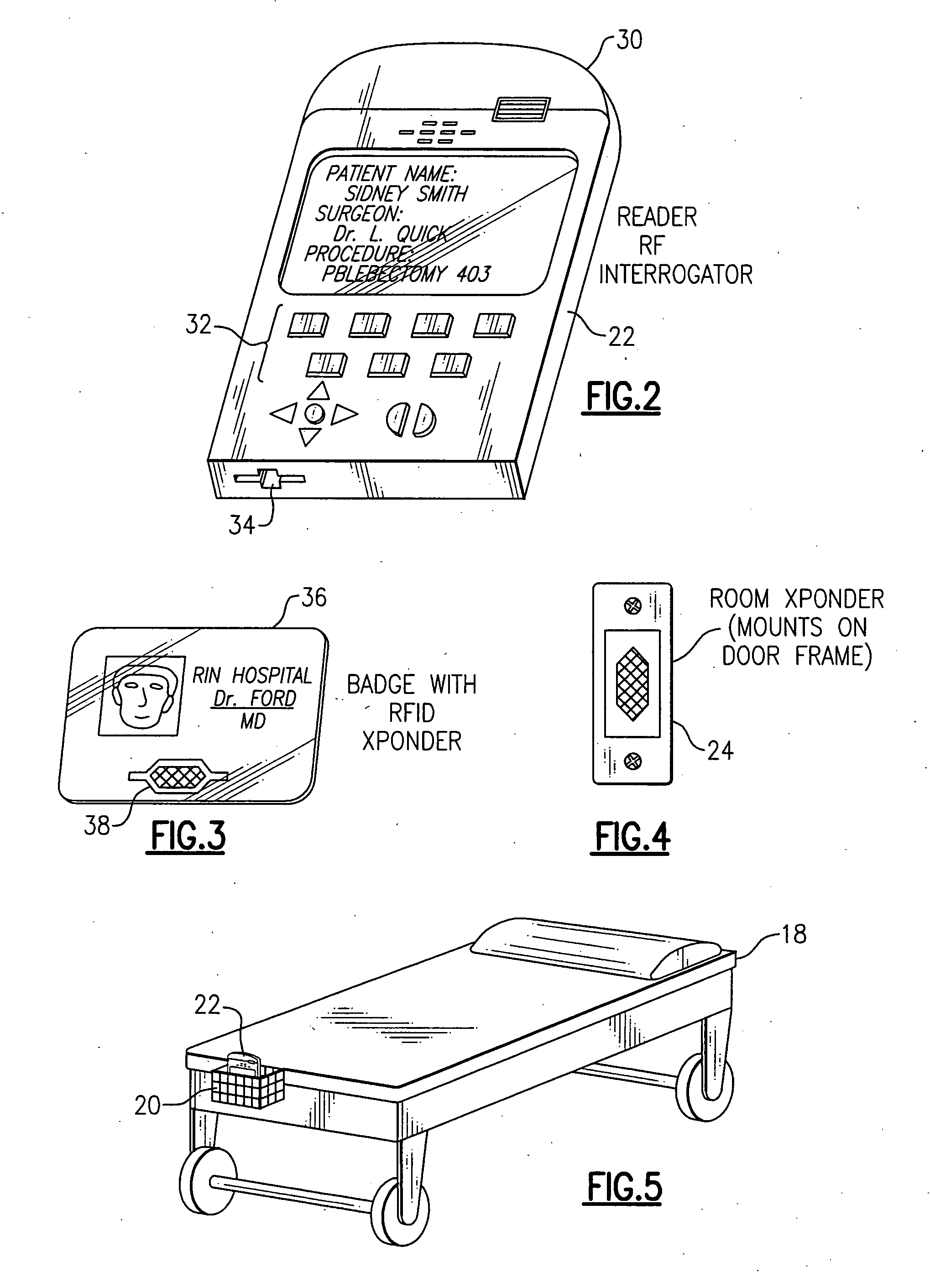RFID tracking of anesthesiologist and patient time
a technology for applied in the field of rfid tracking of anesthesiologists and patient time, can solve the problems of cumbersome system presently in place in hospital operating rooms and other critical care areas for tracking patient care, prone to errors, and burdensome amount of time spent documenting care, so as to reduce or eliminate anesthesiology time recording, accurate identification, accurate identification
- Summary
- Abstract
- Description
- Claims
- Application Information
AI Technical Summary
Benefits of technology
Problems solved by technology
Method used
Image
Examples
Embodiment Construction
[0078] With reference to the Drawing, and initially to FIG. 1 thereof, a surgical suite 10 in a hospital or surgical center typically has a number or patient treatment rooms within it, and here are shown a pre-induction room 12, of which there may be only one or several, an operating room or OR 14, and a post-treatment room, i.e., post-anesthesia care unit or PACU 16. Typically, the patient P arrives at the pre-induction room 12 and is placed on a rolling bed 18. This is the location where the anesthesiologist first meets with the patient, and may administer a block or other anesthesia treatment. The patient's bed has a receptacle or holder 20 mounted at one end. When the patient arrives in the pre-induction room, he or she is assigned a reader device 22, i.e., a hand-held data collection and storage unit with an RFID transceiver as discussed above, and the patient's name and vital data are uploaded into it. Then the reader device 22 is placed into the holder 20 on the patient bed 1...
PUM
 Login to View More
Login to View More Abstract
Description
Claims
Application Information
 Login to View More
Login to View More - R&D
- Intellectual Property
- Life Sciences
- Materials
- Tech Scout
- Unparalleled Data Quality
- Higher Quality Content
- 60% Fewer Hallucinations
Browse by: Latest US Patents, China's latest patents, Technical Efficacy Thesaurus, Application Domain, Technology Topic, Popular Technical Reports.
© 2025 PatSnap. All rights reserved.Legal|Privacy policy|Modern Slavery Act Transparency Statement|Sitemap|About US| Contact US: help@patsnap.com



